The last days of the war in Italy - 80 years ago. ( Part1)The liberation of Genoa 23rd April to 27 April 1945
This is the first of a series of articles marking the 80th anniversary of the end of the Second World War in Italy. Following the liberation of Bologna on 20th April, the US Fifth Army headed for the River Po and into the Lombard plain. The main strategic goal was to head for the cities of Verona and Vicenza, cutting the occupying German armies in half and blocking their route of retreat across the Brenner pass into Austria. While the bulk of the Fifth Army thrust north from the Apennines to Lake Garda , during the same period three other separate drives were in progress: in the east the British Eighth Army chased the Germans north along the Adriatic coast; in the west the US 92nd Division pursued along the Ligurian coast to Genoa; and south of the Po the Brazilian 1st Division and for a while the 34th Division rounded up enemy forces caught in the Apennines. Along the Ligurian coast the troops under the 92nd Division had by the 22nd seized all but the Aulla stronghold in the old Gothic Line, and the Germans began to withdraw hastily towards Genoa. Although the Allies were at least 100 miles from the city on 23rd April a popular uprising began Genoa. In the end the city became famous as the only city in Italy where a substantial German garrison surrendered to Italian Partisan forces.
Among those who witnessed the liberation of Genoa was Basil Davidson a Major in the British No 1 Special Force. He later described the scenes in his book Scenes from the Anti_Fascist War Of the Liberation he wrote:
“ Cities are liberated from enemy occupation, a troops go in, with cheering crowds and flowers, and maidens casting kisses to the happy few., who get there first , and matrons remembering their youth. The day is kind with generous abandon , and there is wine for free in every tap.
It has always been like that , or so they say.
But the liberation of Genoa was not like that. It began as a desperate affair on the evening of 23rd April; and it continued as a desperate affair only three days later did it climax in a huge success. “
Basil Davidson had been parachuted into the mountains of Liguria on 16 January 1945, with Lt . colonel Peter MacMullen and Sergeant George Armstrong, the radio operator. Davidson had been the Paris correspondent of The Economist and later as the diplomatic correspondent of The Star, travelling widely in Italy and Central Europe in the 1930s. Davidson was recruited by MI6, D Section. and sent to Budapest, Hungary in December 1939 under the cover of establishing a news service. In April 1941 he fled to Belgrade, and was captured by Italian forces and was later released as part of a prisoner exchange. From late 1942 to mid-1943, he was chief of the Special Operations Executive (SOE) Yugoslav Section in Cairo. He parachuted into Bosnia on 16 August 1943, and spent the following months serving as a liaison with the Partisans. He was nearly captured or killed several times. SOE posted him to Hungarian occupied Bačka to try to organize a rebel movement there, but Davidson found that the conditions were unsuitable and crossed back over the Danube into the Fruška Gora. The Germans encircled the Fruška Gora in June 1944 in a last attempt to liquidate the Partisans there, but Davidson and the others made a narrow escape. After Soviet forces entered into Yugoslavia, Davidson was airlifted out to Italy.
The British mission was to join with the Italian partisans in Liguria. On the ground, they were met by “ Miro” the leader of the partisans and his Chief of Staff “ Marzo”. Miro was Anton Ukmar, a man with a back story as interesting and exciting as Davidson’s. Ukmar was born in Trieste when it was part of the Austro- Hungarian Empire. Employed on the railways, he had become a member of the clandestine Italian Communist Pary ( PCI) in 1926 and had been fired for Trade Union activities. He had gone through exile i France, to study in the Soviet Union and during the Spanish Civil War had been commissar of the 12th Garibaldi Brigade fighting on the side of the Republican Government. When the Spanish Republic surrendered, Ukmar had fled to Franc, where along with many Republicans he was interned by the French at argeles- Sur. Mer. He had the joined a secret Anglo—French mission to provide training and support to Ethiopian resistance against the Italian occupation. Taken seriously ill with yellow fever he had returned to France, only to be interned again, this time at the notorious Vernet Camp. Her managed to escape and in 1944, became Commander of the partisans of Zone VI in the mountains of Liguria. “Marzo “ was the nom di guerre of Giovanni Battista Canepa , a first world War veteran and former journalist from Genoa, who had been fired for insulting the Italian Royal Family an then spent the next few years in and out of political imprisonment . He too had gone to Spain and been wounded in the Battle of Guadalajara, after which he returned to journalism in Spain and later France. Imprisoned by the occupying Italian Forces, he had escaped from Fort Eseillon following the Italian Armistice and returned to Italy, joinig the partisans of the Divisone Garibaldi “Chichero” in Liguria. Throughout the winter Davidson had accompanied the partisans as they fought and were hunted by German units throughout the mountains. Particularly vicious were the German auxiliaries known to the Italians as “the Mongols” , they were a collection of Kazakhs, Turkmen and Volga Germans who had been freed from, German prison camps and who conducted a campaign of terror against the villages of Liguria, including murder, arson, rape and pillage to dissuade the locals from aiding partisans. But the tide was turning and by Spring the partisan groups has largely evicted the Germans from the mountains, forcing them down into the plains. When the Allied offensive began on 9 April, the partisans had high hope, but were disappointed when General Mark Clark commanding the Fifth Army, instructed them to “maintain their strength and be ready for offensive action”. The partisans in Liguria largely ignored Clark’s order. They feared that a German scorched earth policy would destroy the infrastructure of Genia, in the interests of launching an “anti- Scorch” mission to protecting the city and its vital public services, the British turned a blind eye to the ignoring of Clark’s instructions and the partisans readied to head down to Genoa.
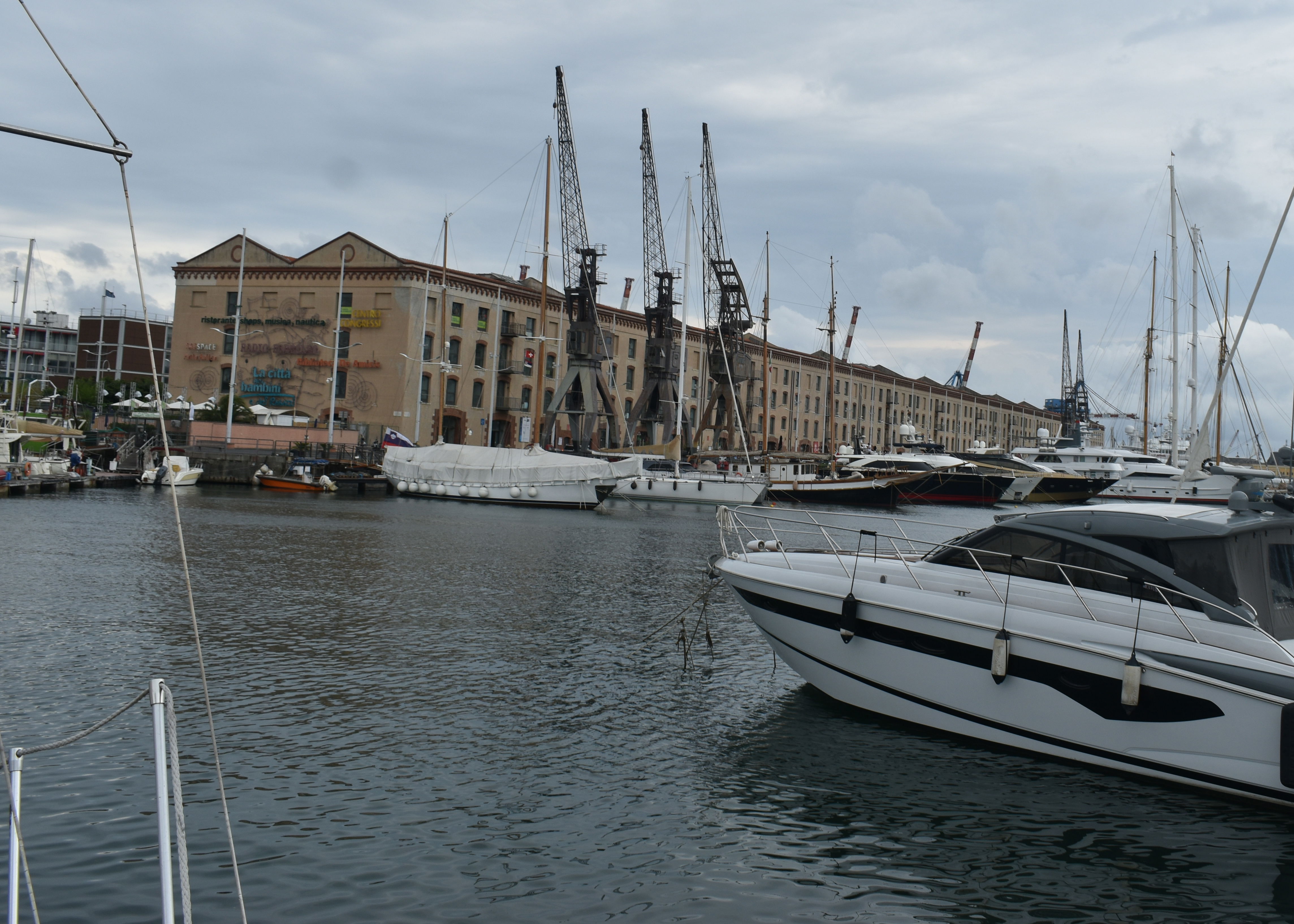
For the partisans and the British saving Genoa's port installations from German "Scorched Earth" was a priority
An uprising began in Genoa in the late afternoon of 23 April in the western area, with its epicentre in Sestri and the surrounding districts, then spread to the Polcevera Valley and, during the night of 23 and 24, to the city centre. Signs of a potential German retreat had already been detected since the afternoon of the 22nd, when some wagons loaded with soldiers and other vehicles left the city. The Germans in Genoa, were commanded by General Gunter Meinhold. A regular Wehrmacht Officer, who had no interest in dying for Hitler , Meinhold realised that the Germans had lost the war He was under orders, to prepare a plan of retreat from the entire Ligurian coast in the direction of the Po and Veneto to link up with the German Armies still in that area. The German evacuation of Genoa and Liguria was to be accompanied by the implementation of Plan Z,. the destruction of port facilities as well as other facilities and public services, so as not to allow the Allies to use their equipment. An evacuation could not be implemented by the Germans if there was any Partisan opposition. Meinhold made various attempts to prevent this from happening, reaching out to his Genoese friends and the Archbishop's Curia to urge the Liberation Committee (the CLNL) and other leaders of the Genoese Resistance to allow the "undisturbed" withdrawal of the Germans in return for not implementing the “Scorched Earth” Plan Z and not destroying the city’s infrastructure. After the CLNL and the CMR (Regional Military Committee) had repeatedly refused to accept approaches through intermediaries Meinhold decided to enter into negotiations directly with the CLNL.
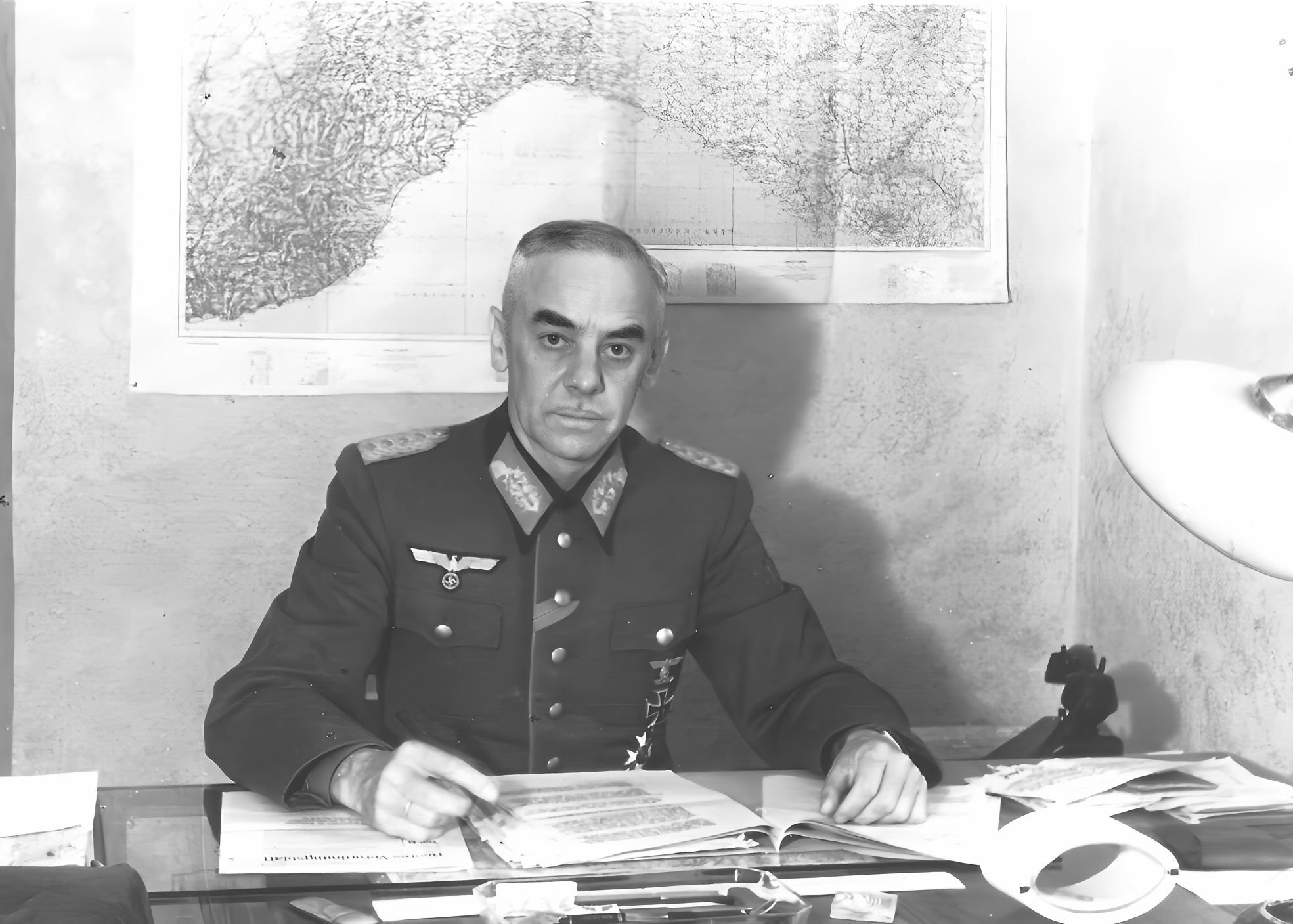
General Meinhold, the German commander of Genoa, who surrendered the city to the partisans
On the evening of April 23, at 8:30 p.m., a joint meeting of the CLNL and the CMR was convened at the headquarters at the college of St. Nicholas, By majority vote , shortly before one o'clock on April 24, it was decided to start the insurrection, A proclamation was issued to the population beginning with the words: "Genoese people, you are free!" Which was a bit risky considering there were still around 12,000 heavily armed German and Italian Fascist Units in the City..On the night between the 23rd and 24th, important targets were occupied in the centre of Genoa: the Prefecture, the Student House, the Casa del Fascio, the Police Headquarters, the newspaper printers. On the morning of 25 April, Vannucio Faralli recenty released from the Marrasi Prison came to the College of San Nicola, headquarters of the CLNL, where he was told the news of his appointment as mayor of Genoa and he thanked him, moved to tears.
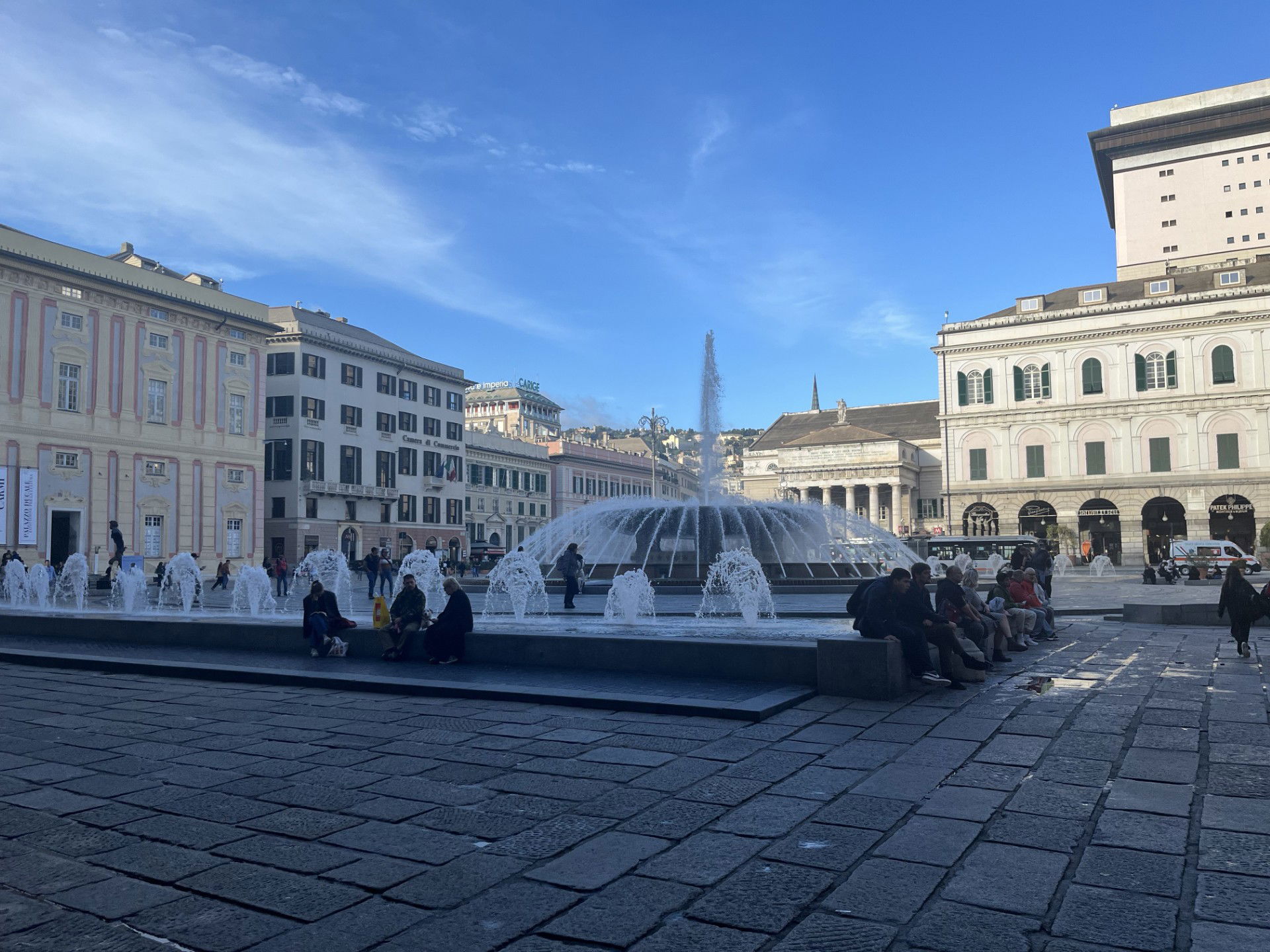
Piazza de Ferrari in the centre of Genoa was the scene of bitter fighting
The liberation of the Marrasi prison was to have a bitter sweet ending . On the afternoon of 23rd April , before the prison was liberated 25 political prisoners were taken by an escaping group of the SS. They were loaded onto a bus escorted by seven German SS soldiers and a machine gun placed on top of the bus. They drove throughout the night in a column of trucks and cars loaded with German soldiers and their luggage. On the afternoon of 24th April at Bornasco, a hamlet in the province of Pavia, the column was attacked by British planes, which also hit the prisoners' bus. Some of the prisoners were killed and wounded. Pieragostini and Rinaldo Ponte although handcuffed and tied together by a chain threw themselves from the bus to the supposed safety of a ditch, but the SS killed them with machine guns. In all six people died including General Rossi, Pieragostini and Ponte. The others were then taken to Milan, to the prison of San Vittore, from where they were released on the morning of 26th April . The hostage taking was probably the last act of Major Engel, otherwise known as the ”The beast of Genoa”. The Germans who, as soon as they were taken prisoner by the partisans invoked respect for the Geneva Convention failed to reciprocate for the partisans. Even so, when news reached the city , while the partisans expressed indignation and anger, no acts of reprisal were carried out against German prisoners waiting to be entrusted to the Americans.
In the late afternoon of the 23rd, as German vehicles and troops were noted on the Genoa-Milan road, the last directives were given for a general mobilization. Precise instructions had been given to local and company CLNs, so that they would coordinate their respective Committees and ensure a unified action. Particular attention had been paid to the military formations, to the SAP of the industrial areas and the centre of Genoa, which operated under the command of the Piazza Command. The immediate objectives were a general strike (which, through leaflets distributed on the night of the 23rd and the morning of the 24th, was proclaimed on the 24th)and armed action against communication routes, military and civilian targets of political importance (Prefecture, Police Headquarters, Student House, prison, railway stations and public services, especially telephone and electricity exchanges). For the entire day of the 24th and 25th, fighting against the Germans raged in the centre of Genoa and in the suburbs (The Italian fascists, Black Brigades, National Republican Guard, as well as many fascist political authorities had largely disappeared). The clashes were particularly violent and with numerous victims along the port strip (between Piazza San Giorgio, Caricamento, Di Negro and Sampierdarena), where the German sailors of Kapitan Berninghaus and also the soldiers of the Italian Decima Mas fired indiscriminately at fighters and passers-by. The members of the SAP Brigades at the disposal of the Piazza Command were about 3,500. They were augmented by thousands of workers, men and women, old and young. The general strike paralyzed the entire city from the early hours of the 24th, stopping trams, trains and soon all traffic. Worries persisted that the Germans would blow up the port and bombard the city from the forts on the hills, which they still held particularly the batteries at Monte Moro, Some partisan units were late to arrive in the city being deployed in strategic positions and engaged in fighting to prevent the German retreat. There was the fear that largely intact German units retreating up the Ligurian coast would enter the city and that combined with the German units in the centre would crush the rebellion. A German encirclement and the crushing of the Warsaw Uprising weighed heavily on the mind.
Partisan forces from outside the city the Garibaldi and G.L.-Matteotti Brigades led by "Miro", the commander of the "Cichero", "Bisagno", "Canevari", "Ugo", "Marzo" Division arrived in Genoa on the night of the 25th and were strongly engaged to conquer the German pockets of resistance. In a short time, the city was cleansed of Germans and fascists, as well as numerous spies who had placed themselves at their service during the twenty months of the war.
While the partisans were fighting in the city, the Americans were moving up the Ligurian Coast with elements of the 92nd Division- the 473rd Infantry Combat Team, the 442nd Infantry Combat Team and the 92nd Division Reconnaissance Troop. Originally, a segregated all black division, original units of the Division had been replaced , so by the time it reached Liguria, the 473rd Regiment, was all while , the 442nd was the famous Nisei Japanese- American battalion ) and the all black 370th Regiment. Divisional troops, Artillery, air support , medical and engineers remained mainly black. On 24 April , the 92nd Division Reconnaissance Troop reached La Spezia, and the 473rd Infantry Combat Team began to advance on the Coast Road to Genia , with 92nd Division Reconnaissance Troop, screening their advance. Progress along the coastal road from La Spezia was slow , due to the difficult nature of the terrain and German demolitions and booby trapping the road . This is the beautiful coastline of the Cinque Terre, but the main road passed inland avoiding the lovely towns along the sea. Even inland the terrain remained mountainous and difficult to traverse . The 317th Engineer supporting the division, painstakingly cleared the road of mines or obstacles , or where this proved impossible, constricted diversionary routes. All along the route, German rearguard units mainly from 1the 148 Grenadier Division put up heavy resistance. Having avoided the coastline, the main road remerges at Sestri Levante and heads along the coast to Chiavari. Outside Chiavari a five-hour battle was fought with the defending Germans before the route was cleared. Heavy fire from German Coastal Artillery batteries above Portofino caused heavy American casualties. Captain Murray Steinman , commanding the 92nd Reconnaissance Troop was killed. Also killed was Major Robert Crandall, who had led the 2nd Battalion of the 473rd Regiment through its battles for Massa, the Gothic Line and Sarzana. Major Crandall was posthumously awarded the Distinguished Service Cross.
Once past Chiavari , the Americans entered Rapallo and the pressed on to Santa Margherita Liguria where they were briefly held up by a German Anti-tank Unit, which proved to be the last resistance on that stretch of road. However, on the road from Santa Margherita to Genoa, the formidable coastal battery of Monte Moro, in the mountains above Nervi remained occupied by the Germans, garrisoned by 175 men in possession of a formidable array of artillery. Bur the Americans had bought artillery along the coast road and 24 guns of the 598th and 600th Artillery were ranged against the fortress. The whole German garrison, quite sensibly surrendered . Between 15 April and 2 May, the 92nd division covered over 100 miles taking 13519 German and Italian prisoners.
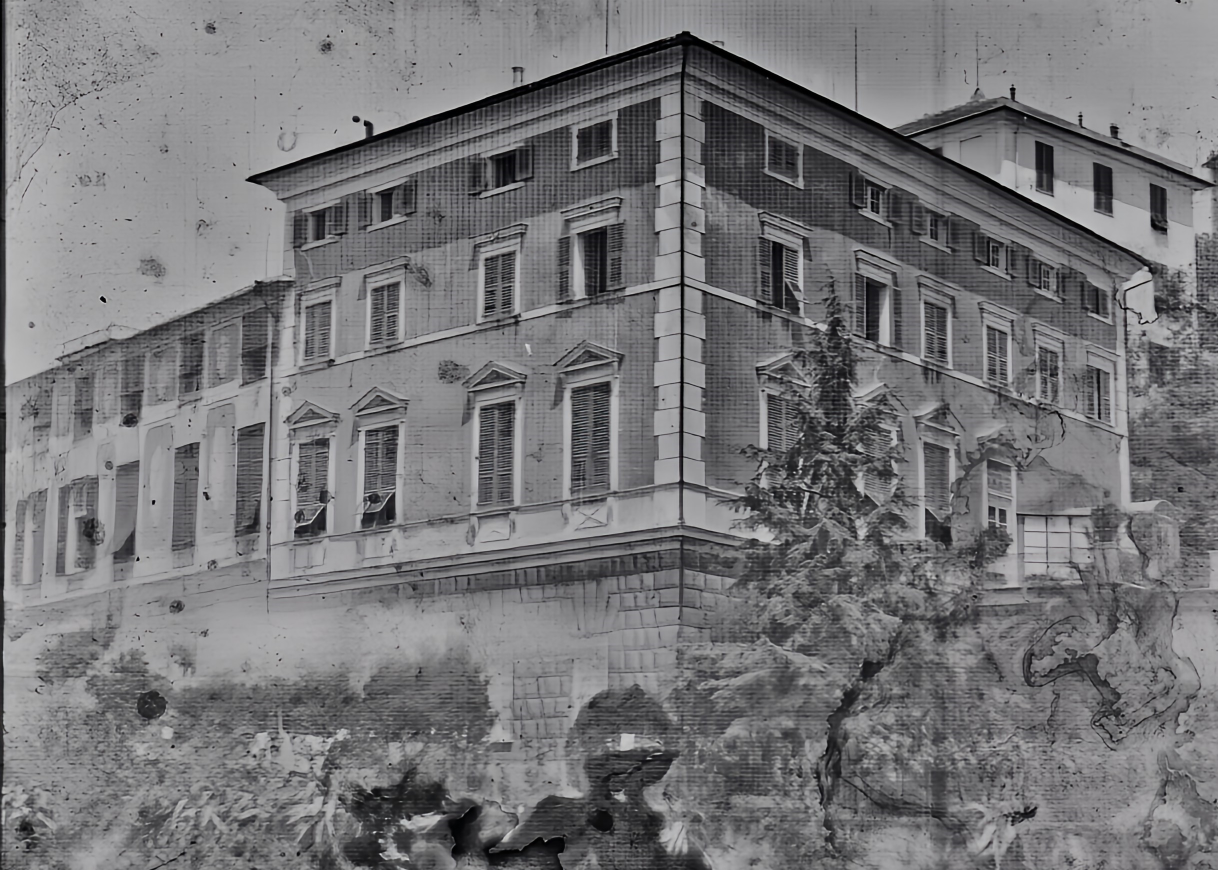
Villa Migone in Genoa, the location of the surrender negotiations
On the afternoon of 25th April, General Meinhold arrived at the Villa Migone in Genoa to negotiate a surrender with the partisans, He probably did not have much choice. The partisans controlled all the major tunnels and bridges and the roads out of the city. As Basil Davidson puts it:
“ Meinhold may still try and fight his way out, but he had lost Genoa. If he did try and fight his way out. He would run a savage gauntlet; the brigades astride every road to the north would sure to that “
The negotiations lasted about three hours (an hour or more he left first for a 15-20 minute stop requested by Meinhold, to consult with his chief of staff, the cardinal and his entourage, but perhaps also to reflect, then for the drafting of the four copies of the act, two in Italian and two in German).
Remo Scappini signed on behalf of the partisans. Scappini was a former glassworks worker, he joined the PCI (then the Communist Party of Italy), of which he was appointed deputy responsible for Tuscany in 1928. In December 1930, he fled to Paris. A few months later he was sent to Moscow to study at the Leninist school for almost two years. During a clandestine trip to Italy, he was arrested in in October 1933 and sentenced to 22 years in prison by the Special Court for the Defense of the State. After nine years in prison, served in Fossano and Civitavecchia, in October 1942 he was freed for the amnesty of the twentieth anniversary of fascism. The clandestine PCI sent him to direct the provincial federation of Turin, where he : contributed to the birth of the Patriotic Action Groups and then, in November 1943, to Genoa. According to Scappini's account;
“Meinhold at times appeared nervous and at times absent; he spoke of the tragedy of the war, as if to show that he had not wanted it, that he had not shared the decisions of Hitler and the Reich General Staff. he insisted on the question of the safety of prisoners, on the surrender of weapons to be made to the Allies, on the personal luggage of his men and their shelter, as if he doubted our authority and our intentions. “
Scappini believed that Meinhold was trying to prevaricate before putting his signature on the instrument of surrender; perhaps hoping for a timely arrival of advanced units of the American 92nd Division that he knew was on the march from La Spezia or for the intervention of the British and American Mission to the partisans of the VI Zone, to surrender as a prisoner to the Allies rather than to the Resistance. In the end at 7,30 in the evening he signed.
“The general was heartbroken, perhaps even physically tired. We had the impression that Meinhold, after signing, felt as if he had been relieved of a heavy burden. We perceived that we had before us a man who had strongly debated between the need to keep faith with the oath made to the political and military leaders of the Reich, as well as the commitment made to his immediate superior, General Vietinghoff (which was to bring the troops under his command to the established place of retreat, in Lombardy and from there in the Veneto) and the impulse of resignation to give in, thus putting an end to the unnecessary bloodshed and further destruction. At certain moments Meinhold gave the impression of being distant in his mind. He seemed to question himself in his heart, perhaps to seek a justification for what he was doing. Perhaps he meditated on his long career as a soldier that had raised him to the rank of brigadier general and then, after retiring from the Russian Front, in March 1944, to command thousands of men in a strategically very important region. We CLNL delegates watched him closely for three hours and we all had this impression, that Meinhold had at that moment made the most demanding effort of his life.”

The instrument of surrender of the Herman forces in Genoa signed by General Meinhold and Remo Scappini at 1930 on 25th April 1945
The text in English reads:
"In Genoa on April 25, 1945 at 7:30 p.m.; between Mr. General Meinhold, as Commander of the German Armed Forces of the Meinhold sector, assisted by Capt. Asmus, Chief of Staff, on the one hand; the President of the National Liberation Committee for Liguria, Mr. Remo Scappini, assisted by Avv. Errico Martino and Dr. Giovanni Savoretti, members of the National Liberation Committee for Liguria and Maj. Mauro Aloni, Commander of the Piazza di Genova, on the other; it was agreed:
1) All the German Armed Forces on land and at sea under Mr. General Meinhold surrender to the Armed Forces of the Volunteer Corps of Freedom under the Military Command for Liguria;
2) surrender takes place by presentation to the nearest partisan units in the usual manner and in the first place with the delivery of weapons;
3) the National Liberation Committee for Liguria undertakes to treat prisoners in accordance with international law, with particular regard to their personal property and internment conditions;
4) the National Liberation Committee for Liguria reserves the right to hand over the prisoners to the Anglo-American Allied Command operating in Italy. Four copies of which are made in Italian and two in German. Scappini Remo Meinhold avv. Errico Martino Giovanni Savoretti Asmus Major Mauro Aloni"
The surrender was to enter into effect at 9.00 am the following morning . Many of the soldiers under Meinhold’s Command obeyed the surrender order and handed themselves over to the partisans. Kapitan Max Berninghaus of the Kriegsmarine refused to obey the order and convened a council of German officers which condemned Meinhold to death. Meinhold was by then being protected by the partisans, so the German death sentence left him relatively untroubled. Berninghaus was, however still in control of substantial coastal batteries on the heights of Monte Moro to the East of Genoa, these still had the capacity to inflict considerable damage on Genoa,
Davidson arrived in Genoa on 25 April 1945 with MacMullen and Armstrong, Davidson. Driving down into city through a series of partisan roadblocks, they found the mainly in partisan hands. Later, he saw the partisan’s copies of the surrender instruments lying on the desk. There were still pockets of German resistance. As a British officer, Davidson was sent out go try and gain the surrender of a German Naval unit that continued to hold out in the Foci area of Genoa. Davidson convinced the German Naval Officer that the Americans were still some distance away and that if he did not surrender , the partisans would attack his position the next day. Unlike Berninghaus, this officer was no holdout Nazi, his men wanted to give up anyway and he agreed to surrender the following morning.
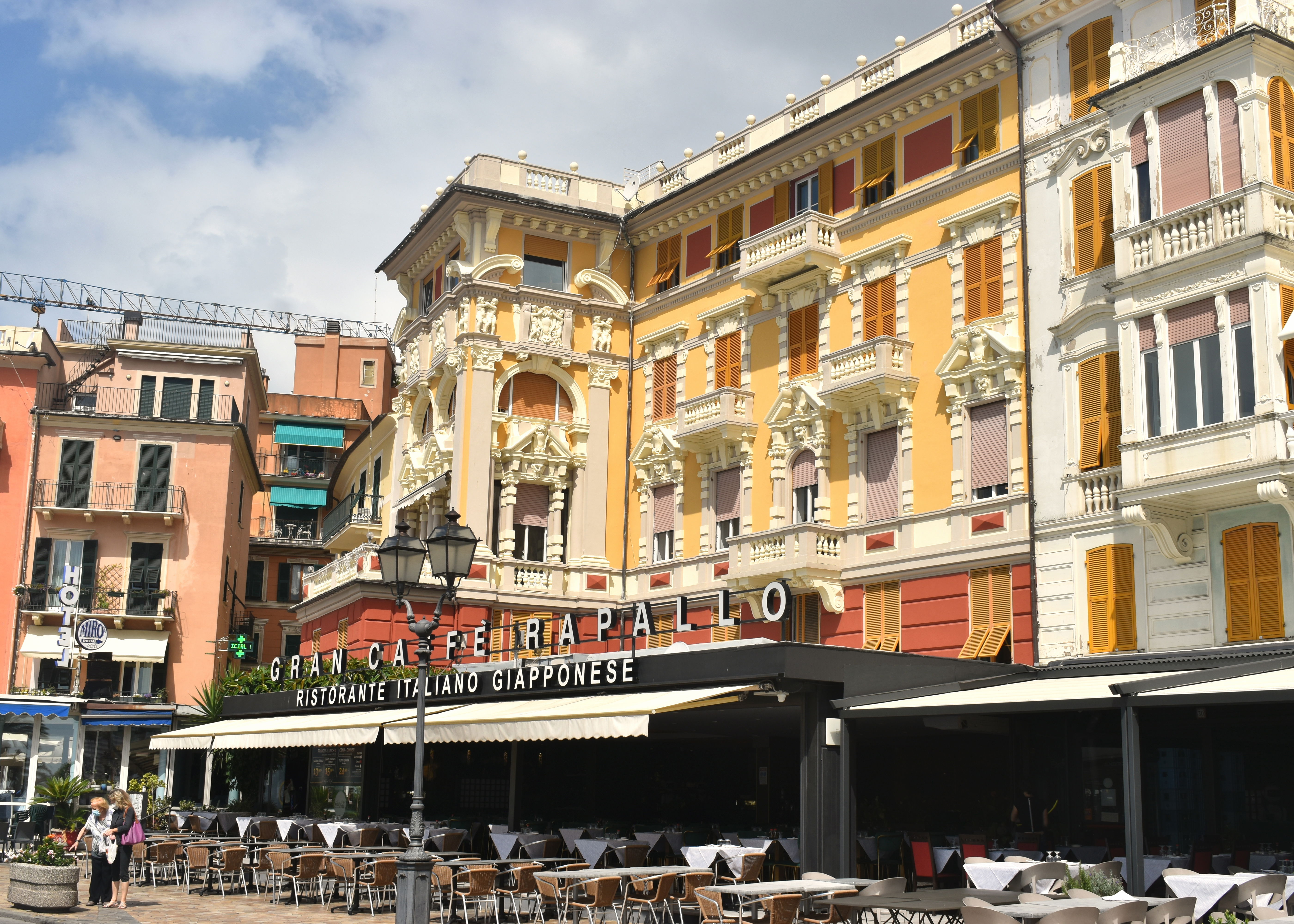
The Americans had reached Rapallo on the coast at the time Genoa was liberated
Meanwhile, nobody knew exactly where Americans were. George Armstrong, Davidson’s radio operator had been unable to raise the Fifth Army on the radio, somebody suggested that since the Americans were supposed to have reached Rapallo and the telephone system was working, why not just telephone them. So they telephoned a bar in Rapallo, a local confirmed the Americans were there and they got passed to various America soldiers and finally spoke to an officer.
Lt. Colonel Peter MacMullen then drove down to Rapallo and returned the next morning in a jeep accompanied by General Almond’s Chief of Staff. He was followed shortly after by the spearhead of the 92nd Division with further units arriving on evening of the 26th and the following morning.
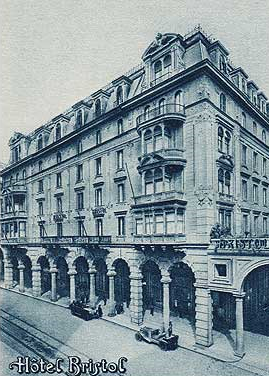
The Hotel Bristol in via XX Settembre served as partisan HQ in Genoa
General Almond presented himself at the headquarters of the CLNL, installed at the Hotel Bristol in Via XX Settembre, at exactly 1:30 p.m. on April 27, where he was received by all the members of the CLNL, the CMR and the Piazza Command. In Davidson’s account, General Almond got off to a bad start, probably being improperly briefed on the situation. In conquering saviour mode, he announced to be translated for the Italians; “tell them that my troops have liberated their city and that they are free men. “ Fortuitously, at the time, a large column of surrendered Germans was marched by the Hotel Bristol under partisan guard. To his credit General Almond corrected himself and thanked the partisans for the work they had done in liberating their own city.
References
Buffalo Soldiers in Italy - Hondon B Horgrove, 1985 Jeffersion NC
Scenes from the Ant-Nazi War, Basil Davidson , Monthly Review Pressz -new York and London, 1990
25 aprile 1945 Genova liberata dai partigiani